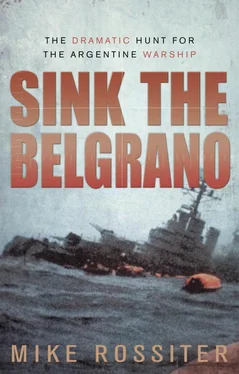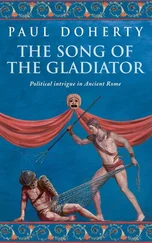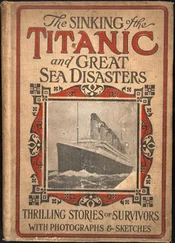Nicholas Ridley, Lord Carrington’s Minister of State and his representative in the House of Commons, was now tasked with dealing with the question of negotiations with the Argentine junta. This was approached with less dash than the issue of Rhodesia, but even so, Ridley was soon visiting Buenos Aires and the Falklands, and a new proposal was beginning to take shape in the corridors of the Foreign Office, based on ideas that had been gradually developing during the slow round of negotiations that had taken place under the last Labour government. This was a formula called ‘lease-back’ and Ridley now believed it was the only possible way out of the impasse. Under this form of agreement, sovereignty of the islands would be formally handed to Argentina, but the British government would hold a lease for a period of ninety-nine years, or more, to guarantee the security of the islanders and their way of life. Both countries’ flags would be flown on the islands, and the Argentine government would have an official representation on the Falklands and on their governing body. The proposal was informally presented to Argentina, in the hope that the parties would be able to agree on some variation of this principle – in particular the term of years – and that the junta would accept a limit to the exercise of sovereignty during the period of the lease.
What would have been the outcome of these negotiations remains one of the great mysteries of history, however, because when Nicholas Ridley visited the Falklands to seek the approval of the islanders he was met with outright antagonism; they made it plain that they would campaign to ‘Keep the Falkland Islands British’. The problem for Ridley was that he could not divulge detailed proposals to the islanders, in case they felt that they were being presented with a fait accompli, the product of secret negotiations with Argentina. On the other hand, the lack of detail exacerbated the islanders’ fears, and these were further aggravated by a new nationality bill going through parliament that seemed to be taking any rights to British nationality away from them.
The most powerful opposition to lease-back, however, lay not in Stanley, but in London. As a result of the deal over Rhodesia, backbench opinion in the Conservative Party had hardened against Lord Carrington and the Foreign Office, and no one was prepared to see what they viewed as a second shameful abandonment of kith and kin in the Falklands. The new Conservative government had not, in their view, been elected to sell British interests down the river. Ridley was the target not only of hostile questioning from Conservative MPs in the House of Commons when he returned from the Falklands, but also of accusations from the Labour opposition of reneging on previous commitments to the Falklanders. Lease-back was a dead letter as far as the growing Falklands lobby in the Houses of Parliament were concerned. Continuing talks with Argentine representatives were abandoned or delayed while Ridley waited to see if the mood would change in the islands themselves, but it was useless. When the islanders elected a new Falkland Islands Council in October 1981, it was solidly opposed to any form of lease-back.
Argentina proposed another round of talks to start in 1982 in New York and continue on a monthly schedule. It wasn’t clear that the British would have anything to say.
The Argentine junta had already shown that it was prepared to exert some military pressure on Britain, even if, like the attempt to arrest the research ship Shackleton , it never amounted to more than harassment that could be disowned by Argentina if it seemed to be getting out of hand. There had been a lot of these incidents over the years since the junta came to power, taking the form, for example, of unauthorized and unannounced landings on isolated islands that were part of the Falkland Islands dependencies, or unofficial over-flights of the Falklands by Argentine air force jets. It was obvious that these were part of a dual strategy to put pressure on both the British government and the Falkland islanders to take the negotiations seriously. By the end of 1981, the British had exhausted their diplomatic options, lease-back was a non-starter because of opposition in the Falklands and in parliament, and there was no other plan on the horizon.
The military leadership in Buenos Aires, however, was beginning to think that it was time to start raising the stakes over the question of the Malvinas. On 9 December 1981, at the height of the southern summer when the pavements of the Plaza de Mayo and the broad Avenida 9 de Julio were swathed in the purple blossoms of the jacaranda trees, two senior military figures, General Leopoldo Galtieri and Admiral Jorge Anaya, met at lunch to discuss various difficulties that they had with the political situation in Argentina and its current president, General Roberto Viola. The two men were very different. Galtieri was a large figure, slightly overweight, expansive, with grand gestures and the face of the rough, bluff man of action that he professed to be. Anaya was small and lean, a precise figure with a fine ascetic face and dark hair that was slicked back, smoothly, close to his skull. Both were exceptionally powerful and ruthless people.
Argentina had been a military dictatorship since the overthrow of Isabel Perón – Juan Perón’s widow – in 1976, and the regime had descended into utter barbarity in its so-called war against subversion. Counter-insurgency operations were mounted in the countryside against revolutionary organizations of agricultural workers and peasants, and detentions, torture and murder were used against opponents of the regime in the cities. The numbers of people murdered by the regime rose into the tens of thousands. The army played the most visible role in the creation of this dictatorship, and its head, General Jorge Videla, became President, but the head of the navy, Admiral Eduardo Massera, played a key ideological role in the formation of the junta and its efforts to kill any opposition. The navy ran its own death squads and turned one of its buildings in Buenos Aires, the Navy Mechanics School, into a centre for the torture and imprisonment of many of the regime’s detainees. Naval officers assumed a key role in the special units that carried out the kidnapping of suspects and made helicopter flights which disposed of detainees by dropping them into the sea.
Admiral Massera had argued that the junta should reassert Argentina’s historical territorial claims over parts of the Beagle Channel in Cape Horn that were disputed with neighbouring Chile, and over the Falkland Islands or Malvinas. His proposal that the Falklands should be recovered by military means had been met with circumspection by President Videla, who thought that it was a subterfuge to enable the navy, and Admiral Massera himself, to amass greater political influence; it was this distrust amongst the members of the junta that had given the British government some extra breathing space. None the less, Admiral Massera was given permission to draw up contingency plans for an invasion of the Malvinas and it was Admiral Anaya, Fleet Commander of the Argentine navy, who was given the task of producing them.
By the time that General Galtieri and Admiral Anaya were sitting down to lunch in 1981, politics had moved on. Videla had been replaced in March 1981 by General Viola. Thousands had been murdered, and the war against subversion could not be continued indefinitely. The junta was split over what policies it should follow in order to retain military power. President Viola was in favour of some form of political liberalization, and had established contacts with remnants of the Peronistas and the Radical Party. A civilian, Costa Méndez, had been allowed into the government as Foreign Minister. But General Galtieri and other senior military figures were concerned, not only about the threat of some relaxation in the repressive policies of the junta, but also about the developing economic crisis that had brought galloping inflation and stagnant output.
Читать дальше












